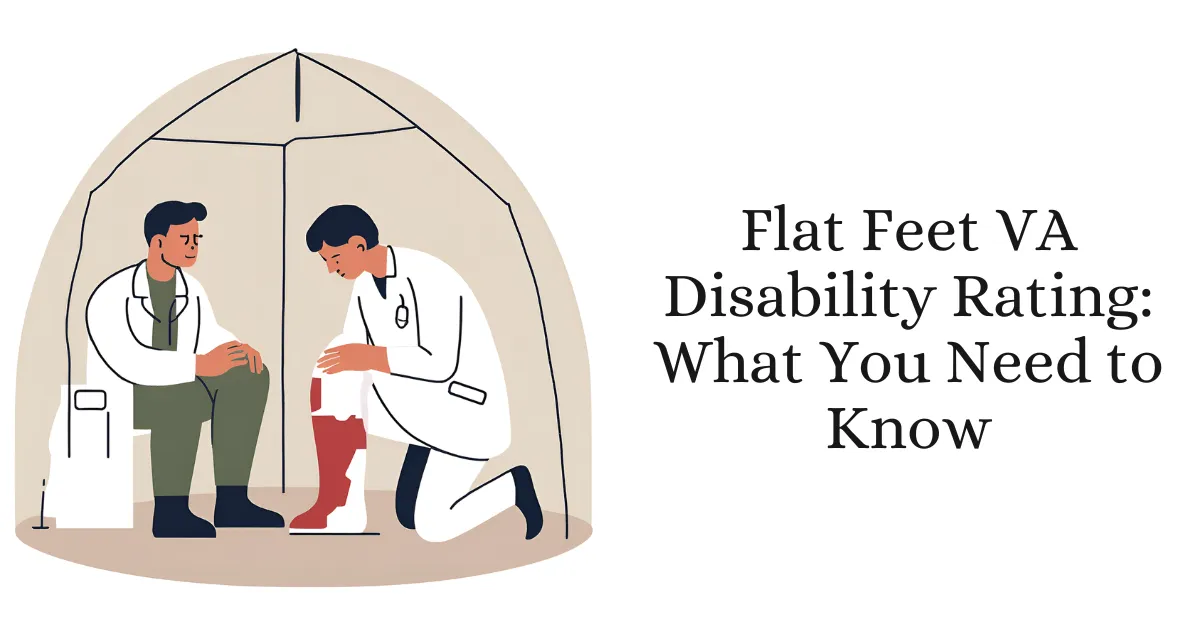Flat feet, or pes planus, can cause chronic pain, mobility issues, and other complications. If military service worsened or caused this condition, you might qualify for VA disability benefits.
Understanding the VA’s rating system is crucial to securing fair compensation. Here’s what you need to know about how the VA evaluates flat feet.
How the VA Evaluates Flat Feet as a Disability
The VA recognizes flat feet as a service-connected disability if it resulted from or was aggravated by military service. This includes injuries from physical training, extended marching, or improper footwear.
To qualify, medical records must show a diagnosis and evidence of how the condition affects daily life. A VA Compensation & Pension (C&P) exam may assess pain, swelling, and functional limitations. Orthopedic evaluations and imaging tests, such as X-rays, can strengthen a claim.
Flat feet can also lead to secondary conditions, like knee, hip, or back pain, which may further impact the disability rating. The severity of symptoms determines the final VA rating.
VA Disability Rating Criteria for Flat Feet
Flat feet are rated under 38 CFR § 4.71a, Diagnostic Code 5276, categorizing severity based on pain, deformity, and functional impairment. The VA assigns ratings as follows:
- 0% Rating (Mild) – Symptoms are present but relieved by orthopedic shoes or arch supports.
- 10% Rating (Moderate) – You experience pain on use, swelling, and calluses, even with arch support.
- 20% (Unilateral) / 30% (Bilateral) Rating (Severe) – Marked deformity, pain accentuated by use, swelling, and characteristic calluses.
- 30% (Unilateral) / 50% (Bilateral) Rating (Pronounced) – Extreme tenderness, marked inward displacement of the foot, and Achilles tendon spasms that do not improve with orthotics.
A higher rating requires significant medical evidence showing the impact on mobility and daily function. If your condition worsens, you can request a reevaluation.
For the highest rating (50%), you must demonstrate severe symptoms that persist despite medical treatment. If flat feet contribute to other disabilities, such as arthritis, knee instability, or spinal misalignment, these secondary conditions may also qualify for compensation.
Accurate documentation, medical opinions, and a strong C&P exam performance are key to securing the correct VA rating.
How to Increase Your VA Rating for Flat Feet
You can request a rating increase if your symptoms have worsened since your initial rating. Medical evidence, such as updated X-rays, doctor reports, and personal statements, can support your claim.
A secondary service connection may also boost your rating. Conditions like knee pain, shin splints, or hip misalignment caused by flat feet could qualify for additional compensation. If mobility is significantly impaired, Total Disability Individual Unemployability (TDIU) may be an option.
Conclusion
Flat feet can severely impact daily life, and the right VA rating ensures fair compensation. Understanding the criteria and providing strong medical evidence is key to maximizing benefits.
